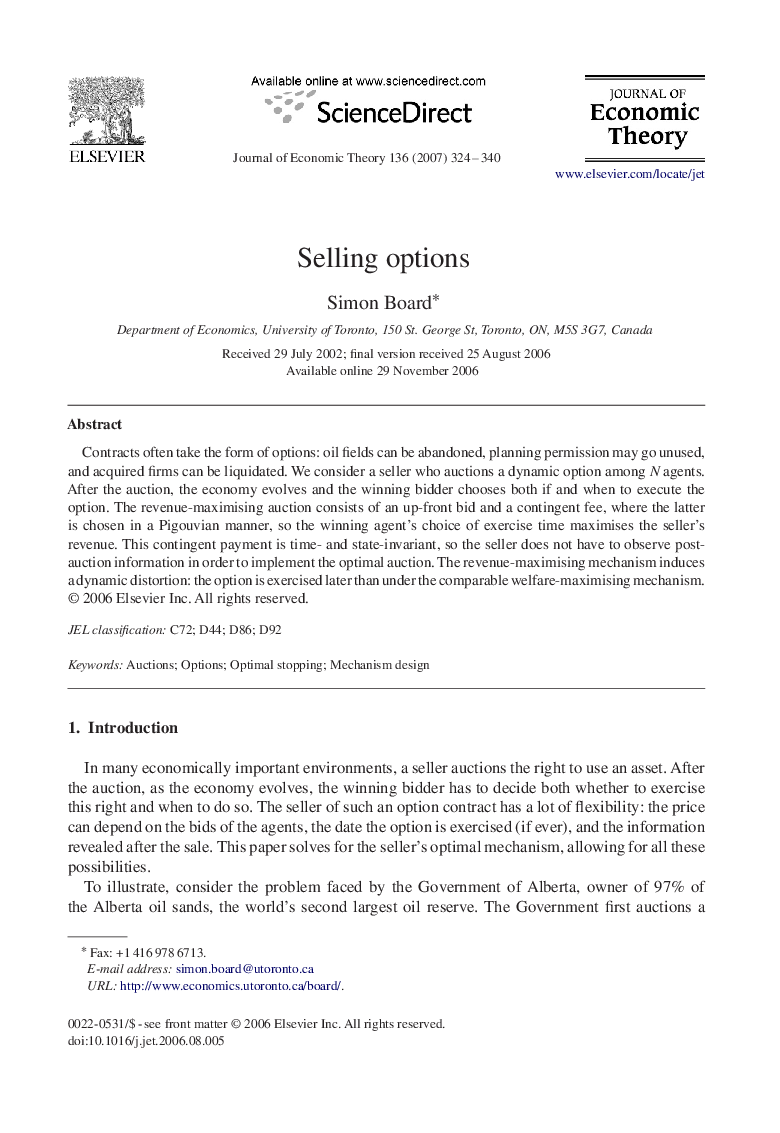| Article ID | Journal | Published Year | Pages | File Type |
|---|---|---|---|---|
| 957352 | Journal of Economic Theory | 2007 | 17 Pages |
Contracts often take the form of options: oil fields can be abandoned, planning permission may go unused, and acquired firms can be liquidated. We consider a seller who auctions a dynamic option among N agents. After the auction, the economy evolves and the winning bidder chooses both if and when to execute the option. The revenue-maximising auction consists of an up-front bid and a contingent fee, where the latter is chosen in a Pigouvian manner, so the winning agent's choice of exercise time maximises the seller's revenue. This contingent payment is time- and state-invariant, so the seller does not have to observe post-auction information in order to implement the optimal auction. The revenue-maximising mechanism induces a dynamic distortion: the option is exercised later than under the comparable welfare-maximising mechanism.
